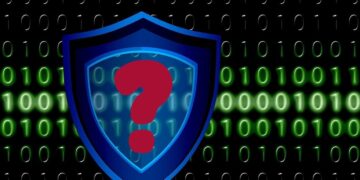Among several things that are now a part of the new normal, work from home has become a prominent one, disrupting the corporate, SME and overall business lifestyle of millions worldwide. Even as the lockdown is being relaxed, the home continues to double up as office space for adults and also virtual classrooms for kids – a norm that looks like is here to stay for a long time.
Under such circumstances, the significance and security of the shared home WiFi have become vital for organizations and individuals. While India continues to remain the second-largest country to experience maximum cyberattacks in the world over the past few years, the pandemic and the lockdown have further exposed the vulnerabilities in the virtual space for one of the largest population of internet users in the world.
In this instance, the pandemic has proven to be a huge accelerator for digital transformation across sectors, from business, educations, healthcare, lifestyle and retail. It is now time for a massive cyber security transformation, as companies, economies and countries prepare for a long haul of settling into the new normal, for a considerable time in the near future.
Some of the key work from home trends related to the virtual security domain that is now going to lead the complete re-invention of cyber security in the near future are:
1. Mobile appliances
In contrast to the legacy security appliances, traditional cyber security setups were always against a mobile network that generally enhanced the cyber threat risks as users moved out of the protected perimeter. Now, however, as an increasing number of users are going to be accessing work and official information on the go, and will also no longer be concentrated to a single geography, the new cyber security innovations need to create a vast, all-encompassing set up to manage the same. As multiple employees now spread out across the country and access the data from remote locations, innovations in cyber security need to address the mobility factor in the long run.
2. Dependency on Cloud:
The security of the cloud has always been debated by traditional cyber security experts with multi-national companies insisting on setting up huge internal servers or data centers to ensure minimum exposure of data on external cloud domains. However, with the use of public domain apps that use general cloud infrastructure, and the increasing use of personal emails or mobile-based apps for convenient conversations among colleagues, cyber security experts will need to devise strategies that can address safer use of cloud technology for a wider set of users.
3. Encrypted cloud connections:
Generally, encrypted connections on a closed network server are standard in the case of several the large businesses. However, with the exponential rise in bandwidth demand that businesses move to encrypted cloud connections that offer wider processing ability while managing data security and access to information for a widely spread out set of users. This move can be vital in ensuring a long term, secure network for the work from home structure.
4. Education of employees and constant monitoring:
While the shift in the technology and security measures for data from the CXO/CISO level would be initiated to do the needful, all effort could be lost if employees are not actively made to participate in new procedures. Given the remote-working format, there is little to almost no control over how, when, and where the device would be used and also if it would be used for non-official purposes. In such cases, timely educational workshops on basic do’s and don’ts for secure work from home routine needs to be conducted. Additionally, a quick set of tips on what to do in case one suspects a data breach also needs to be shared as a ready reckoner with employees so that in case of a crisis, immediate actions can be taken.
In times of the pandemic, when the world is increasingly learning to depend on digital innovations and the World Wide Web (WWW) has become the hotspot for business and leisure activities, the role of cyber security has become one of the most significant aspects of modern life. Even as IT teams gear up to create solutions, it is now time for cyber security teams to create a safe, and efficient background infrastructure for these innovations to be successful and create the transformation in the post COVID world
Disclaimer: The author of this article is Sandeep Kamble, Founder and CTO, SecureLayer7, Views expresses in the post are his own.























